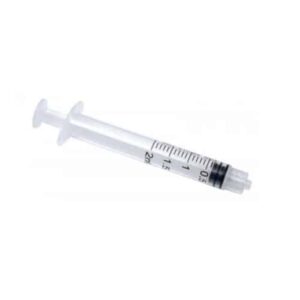Delivery service
Free Worldwide Shipping & Returns
Free Worldwide Shipping & Returns
40% Discount for you
Tax Free Shopping
80,000+ Satisfied Customers


 Aquayer Plan Stop 5 tablets
Aquayer Plan Stop 5 tablets
 Tetra Med G-Tonic 20ml
Tetra Med G-Tonic 20ml
 Sera med Professional Nema 10 ml
Sera med Professional Nema 10 ml
 Sera med Professional Trema 25 ml
Sera med Professional Trema 25 ml
 Veterinary needle single 20G×1 ″, 0.9×25 mm 200 pcs
Veterinary needle single 20G×1 ″, 0.9×25 mm 200 pcs
 Hobby Viras 200ml (6.76oz)
Hobby Viras 200ml (6.76oz)
 Disposable syringe 2 ml Luer Lock needle 0.6x25 mm Medicare, 100 pcs
Disposable syringe 2 ml Luer Lock needle 0.6x25 mm Medicare, 100 pcs
 Disposable syringe 1 ml Alexpharm needle of 0,3х13 mm * 100 pcs
Disposable syringe 1 ml Alexpharm needle of 0,3х13 mm * 100 pcs
 Disposable syringe 10 ml Luer Slip needle 0.8×38 mm Medicare, 100 pcs
Disposable syringe 10 ml Luer Slip needle 0.8×38 mm Medicare, 100 pcs
Parasites are creatures that at some point in their life survive by feeding on another individual. It’s easy to think of them as quirks of nature, as creepy outcasts that no one wants to encounter. But as scientists discussed during a TED talk, parasitism may be the rule rather than the exception. About 40% of animal species are parasites. If you discard elephants, hummingbirds, whales, and turtles and choose a random animal, it is likely to be a blood drinker, disease carrier, carrier castrator, or flesh eater.
Plants or animals that live on the surface or inside another plant or animal. The parasite receives food from the organism on which it lives. Some parasites are so small that they can only be seen under a microscope. For example, malarial Plasmodium is a parasite that enters the human blood and causes a serious disease – malaria.
Other parasites reach large sizes. For example, a tapeworm that sticks to the inner wall of an animal or human stomach can grow up to a meter or more in length. Caused by parasites of the disease often occur in children who love to play in the mud – where there are a variety of parasites, including worms. They can enter the child’s body when he takes dirty hands in his mouth or when he hugs or kisses an animal infected with worms. There are many different diseases caused by parasites.
Malaria
This disease occurs as a result of infection with one of the four types of malaria parasites. A person gets sick when they are bitten by an infected mosquito. In the first week after infection, attacks of high fever, headaches and chills are repeated every day. Then, over the next few weeks, the condition is changeable: one day you can feel great, and on the other you will again experience severe chills that sometimes last for several hours, the temperature rises, and you will sweat profusely. You can accurately determine that a person has malaria if you take a drop of the patient’s blood and examine it under a microscope. When viewed, the parasite that causes malaria will be visible. Malaria attacks can last for many weeks or months if not treated. There are several types of medications, but they must be taken for a very long time to completely defeat the disease.
Amoebic dysentery
This gastrointestinal disease can be caused by tiny single-celled animal parasites called amoebas. A child with amoebic dysentery has abdominal pain and copious watery diarrhea. The patient loses his appetite, anemia occurs and his weight decreases sharply, which is very dangerous. If a person has dysentery, then in the laboratory analysis of feces, the amoeba can be viewed under a microscope. Against dysentery, fortunately, there are drugs that can quickly kill the parasite and cure the child. In order not to get sick with amoebic dysentery, the child must keep his body clean and follow the rules of hygiene.
Worms
Various types of worms can enter a child’s body if they run barefoot in the mud, have a bad habit of putting their hands in their mouths, or play with infected Pets. There are dozens of different worms that parasitize humans: hookworm, whipworm, pinworm, tapeworm, and others. Each of them can get into our body and cause illness. Some of the worms that enter the stomach or intestines leave the body with feces. Sometimes worms do not penetrate into the digestive tract, but into the blood, muscles and other organs. These parasites are harder to detect, but there are still ways to deal with them.
No account yet?
Create an Account